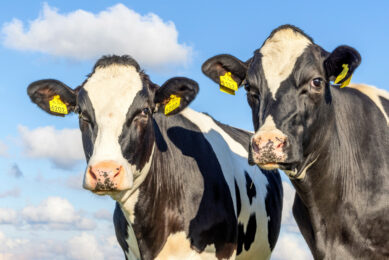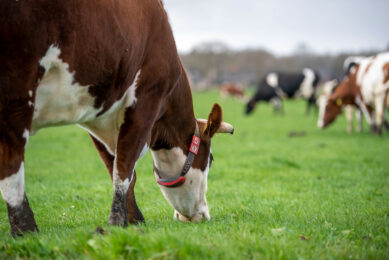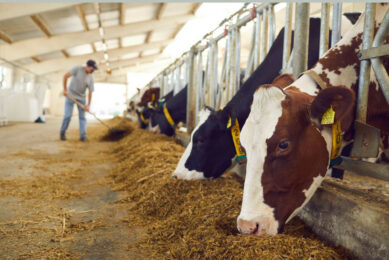How refocused management can reduce ammonia emissions in dairy farming
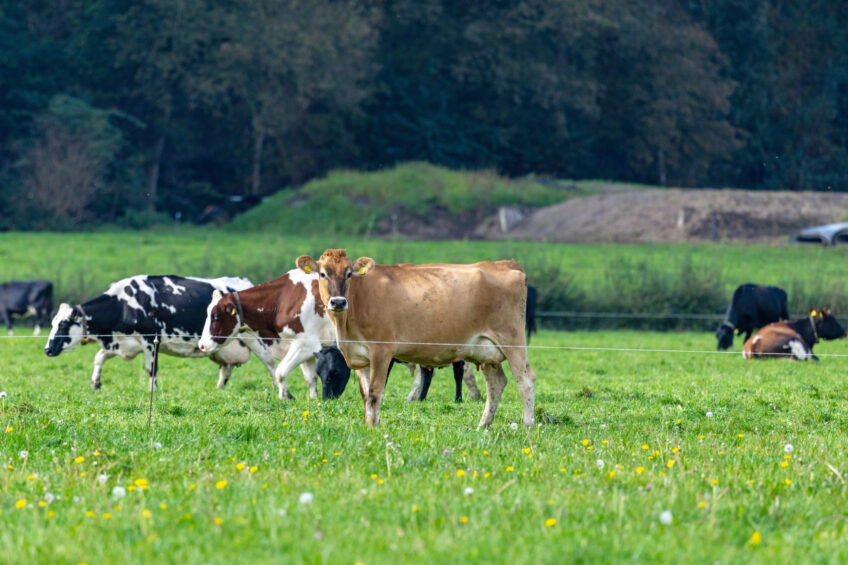
With the global dairy industry putting in efforts to reduce ammonia emissions, research into how exactly this can be achieved is now showing positive results.
Dairy cattle in the UK are said to contribute about 25% of all agricultural ammonia emissions, mostly due to the large amount of nitrogen excreted in their urine. This nitrogen is quickly converted to ammonia when exposed to air, and subsequently reacts with other compounds in the air to form secondary particulate matter that can significantly harm human health. What’s more, ammonia has been found to damage woodlands and lakes, as well as contribute to soil acidification and the eutrophication of waterways.
Tackling ammonia
There are proven methods to better manage dairy herds to reduce the amount of ammonia produced, and scientists at the College of Agriculture, Food and Rural Enterprise (CAFRE) in Northern Ireland have researched these methods.
A whopping 97% of ammonia emissions in Northern Ireland are generated by agriculture, mostly from animal manures and nitrogen fertilisers. In the past, the UK has agreed to legislative reduction requirements, which were set as part of the UN Gothenburg protocol to reduce ammonia by 16% by 2030, based on 2005 levels. However, since then, emissions have risen to 31.98 kilotonnes (kt) in 2021, which sets a new target requirement of 25% reduction from this level. In 2021, CAFRE developed a College Estate Strategy document which highlighted the best environmental practices in all activities across the college with attainment targets for 2030.
Judith McCord, senior air quality technologist at CAFRE, said: “The strategy aligns the work of the CAFRE estate to the principles within the Future Agricultural Policy Framework Portfolio of improved environmental sustainability, increased productivity, improved resilience and an effective, functioning supply chain.”
One of the 8 high-level targets, which will require action to make progress, is for CAFRE air quality not to impact on local habitats and health by 2030. During its research, the college identified several dairy herd management areas where action can be taken to reduce ammonia levels, including formulating rations, storing manure and applying slurry.
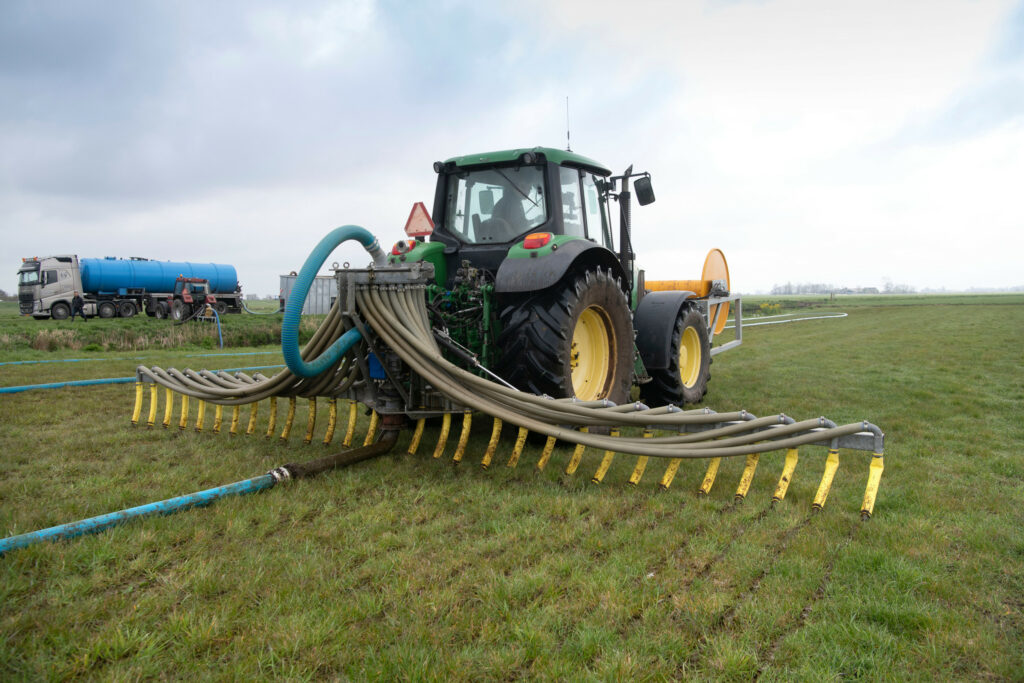
Mitigation work
A new ration was formulated for the CAFRE dairy herd which reduced crude protein from 18% to 16%. The research suggests that reducing crude protein content in the diet by 1% can reduce ammonia emissions by 5-15%. This range is based on stage of lactation and protein requirement in conjunction with forage quality and genetic merit.
A new programme to scrape manure off cubicle house floors more frequently – every 2 hours instead of 4 hours – was set up. Alongside more frequent scraping, installing low emission flooring also reduced urine pooling by funnelling it into deeper grooves. This helps to better separate manure from urine.
More frequent scraping of floors alone can contribute up to 20% reduction in ammonia emissions. This, in combination with the best available flooring systems, can potentially reduce emissions by up to 50% compared with traditional practices.
Research on impermeable tensioned fixed slurry covers, which CAFRE has installed on all outdoor above ground slurry stores at the Dairy Centre, showed that these covers can reduce emissions by 80% compared to uncovered slurry stores.
When considering chemical fertiliser application on the CAFRE farms, the team switched entirely to using stabilised urea which has been shown to reduce ammonia emissions in wet climatic conditions by up to 70% compared to using Calcium Ammonium Nitrate.
Research suggests that extending the grazing season by just 1 week can reduce ammonia emissions by 3.5%.”
Manure management
In terms of manure management, CAFRE has been applying slurry using trailing shoe technology in recent years. Using low-emission slurry-spreading equipment (LESSE) has reduced ammonia emissions by 60% compared to splash plate spreading.
Also, increasing the number of days cows spend grazing in the fields has resulted in both economic and environmental gains at CAFRE. Grazing removes the need to manage, store and spread manure. Research suggests that extending the grazing season by just 1 week can reduce ammonia emissions by 3.5%.
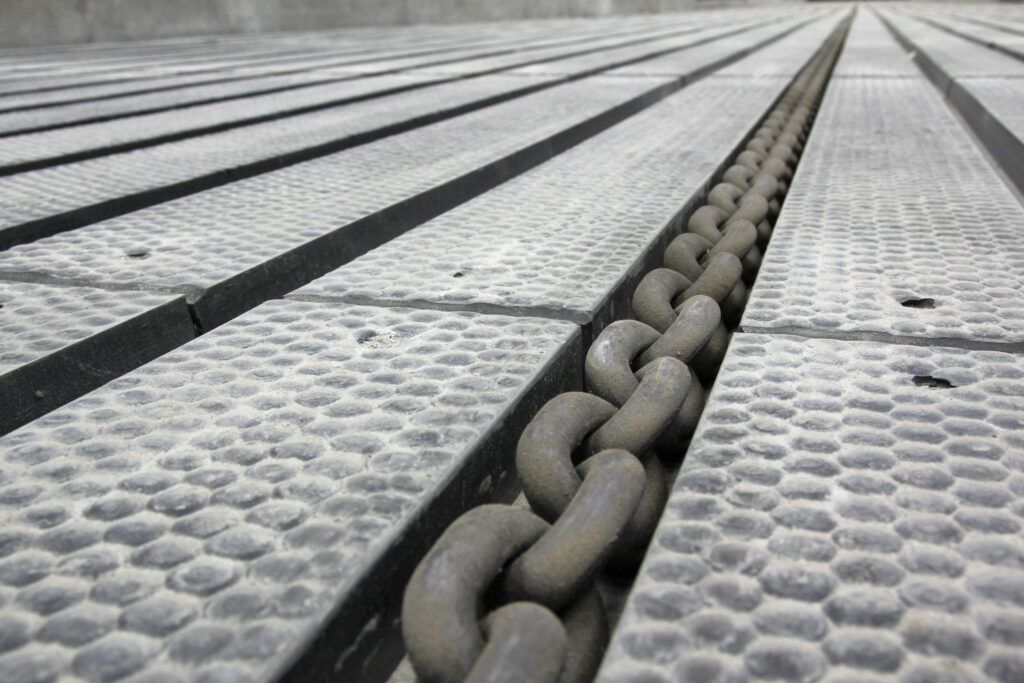
Overall result
To establish an overall baseline for ammonia emissions, data across the CAFRE Farm Centres was captured to establish how effective the new management methods actually are. CAFRE commissioned AFBI (Agri-Food and Biosciences Institute) to work on nitrogen modelling for the Farm Centres. This helped to assess the benefits of the legislative and voluntary measures deployed on farms and to establish the total figure for ammonia emissions for each centre.
Preliminary results suggest that the combination of all the mitigation strategies employed at CAFRE reduced ammonia emissions by over 25%. In the future, CAFRE plans to fine-tune these practices to see if any greater ammonia reductions can be gained from their farm management strategies.
Join 13,000+ subscribers
Subscribe to our newsletter to stay updated about all the need-to-know content in the dairy sector, two times a week.



